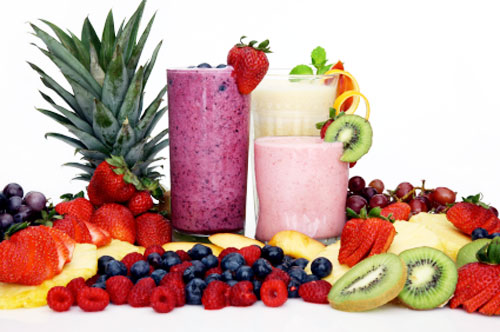
Written By: Sofia Layarda, MPH
Title: Master of Public Health
Alumni: University of California, Berkeley
Last Updated on:

We’re pretty much conditioned to think of sugar as something to limit or avoid. However, the term “sugar” encompasses many different types, some of which naturally exist in the foods we eat and cannot be separated from them. For example, many fruits and some vegetables are naturally high in certain sugars ? and that’s part of the reason they’re so tasty! Dried fruits also tend to be higher in sugar load per serving than their fresh counterparts, because the water has been removed. The addition of dried fruits to cereal (such as raisins in Raisin Bran), bumps up the amount of sugar listed on the Nutrition Facts label.

On the other hand, sugar that is added to processed foods (the kind you’ll find in soda, sweets and candy bars) brings empty calories and nothing else. Take a look at some common food items below and the amount of sugar you get in a typical serving.
Table of Contents
| Food | Source and amount of sugar |
| 1 medium apple | 5 tsp (naturally-occurring) |
| 1 cup unsweetened orange juice | 5.25 tsp (naturally-occurring) |
| 1 cup SunnyD orange-flavored drink | 5 tsp of added sugar |
| 1 medium baked potato | 0.5 tsp (naturally-occurring) |
| 1 cup cooked brown rice | 0.2 tsp (naturally-occurring) |
| 1/2 cup raisins | 12.25 tsp (naturally-occurring) |
| 1 cup reduced fat (2%) milk | 3 tsp (naturally-occurring) |
| 1 medium corn on the cob | 1.25 tsp (naturally-occurring) |
| 1 medium banana | 3.5 tsp (naturally-occurring) |
| 1 cup raw carrot slices | 1.5 tsp (naturally-occurring) |
| 1 can of cola-type soda (12 fl oz) | 8 tsp of added sugar |
| 1 regular (2 oz) Mars Snickers bar | 7.5 tsp of added sugar |
| 1 package (1.69 oz) of M&M’s, Milk Chocolate | 7.75 tsp of added sugar |
Since the Nutrition Facts label does not distinguish between different types of sugar, what’s the best guideline? Whenever possible, choose foods that are closest to their unprocessed state. That means eating fresh fruits and vegetables, and if you have to get juice, make sure it’s 100% juice with no added sugar (read the ingredient list to be sure). That way you can guarantee your body the maximum benefits from fruits, vegetables, and whole grains; most fruits and vegetables are high in Vitamin C and antioxidants, as well as fiber, while whole grains are great sources of the B vitamins and fiber.
Alumni: University of California, Berkeley – Sofia believes in bringing back fun and pleasure into everyday eating. She loves cooking, and is constantly experimenting with ingredients, creating recipes and trying them out on family and friends. Her latest interest lies in finding realistic and practical ways of environmentally-friendly food/eating habits.